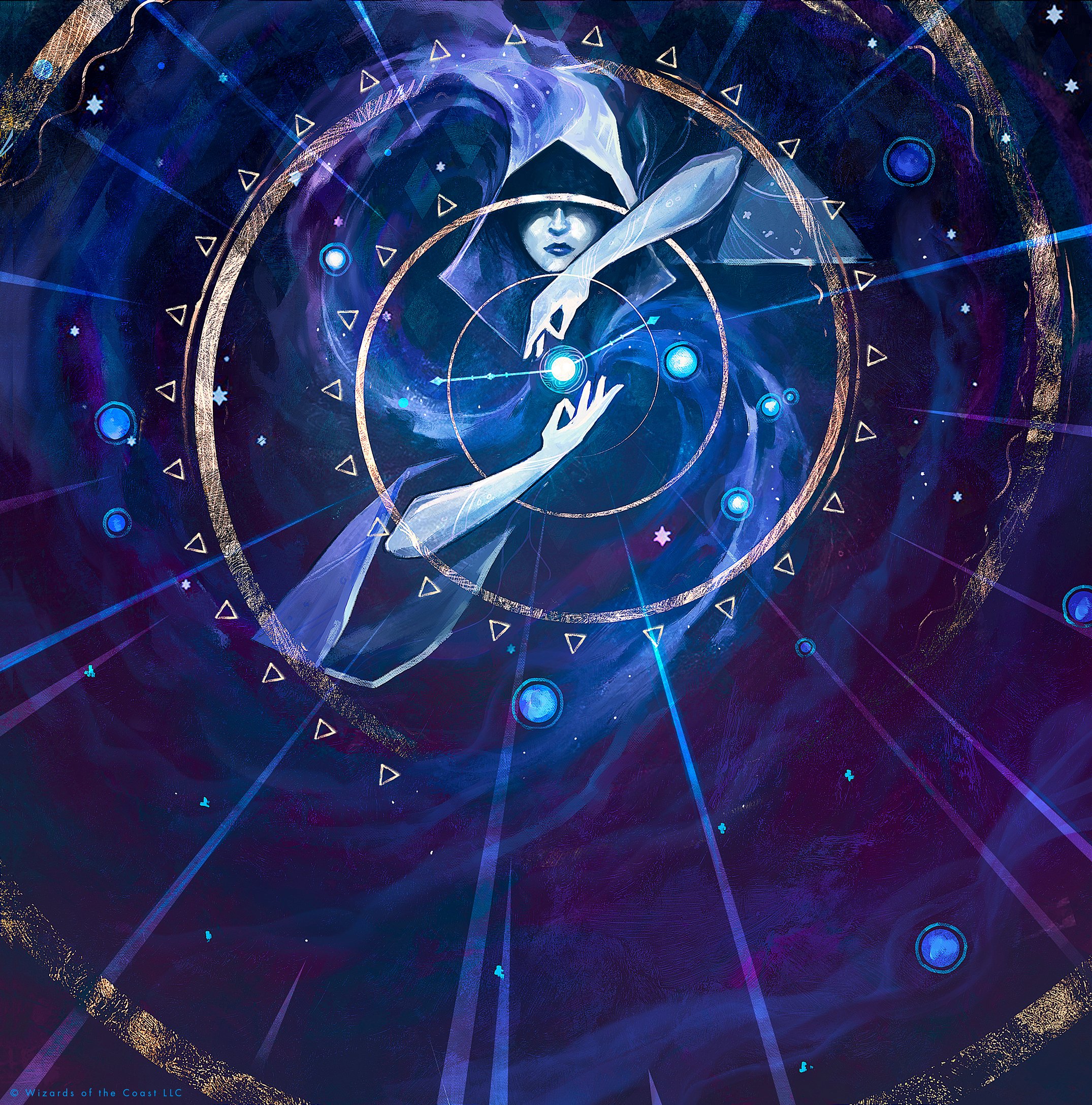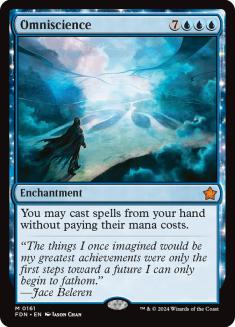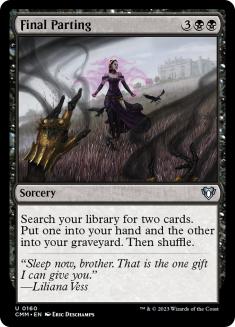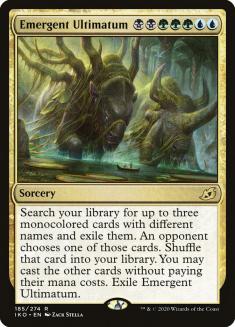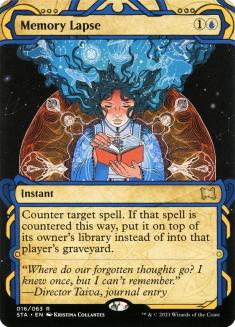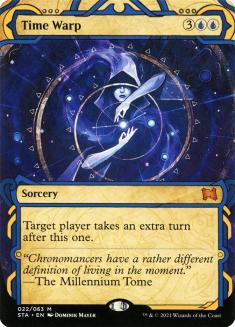One of the best things about Magic is that if you don’t enjoy a particular format, there’s almost certainly a different one that you’ll enjoy. I can usually find something to appreciate about any format, so I can focus on whichever format is more important for the folks that consume my content. Standard isn’t even close to the worst it’s been but Historic certainly has more of my attention. The fact that Strixhaven looks weak for Standard isn’t encouraging either.
I’m not excited for old Standard plus a couple of new additions, but the Mystical Archive is the polar opposite. Here are the decks I’m going to try, in order, when Strixhaven drops on Arena, and I’m starting with a banger.
1. Jeskai Reanimator
Creatures (9)
Lands (21)
Spells (30)

I started working on this deck a few weeks ago and like how it’s shaping up. Combining what I already had with Brent Vos’s Final Parting technology makes this deck much stronger.
Omniscience and Final Parting make the Emergent Ultimatum piles more interesting, although nothing is deterministic quite yet. If you start with Scholar of the Lost Trove, Omniscience, and Final Parting, they basically have to give you Omniscience and Scholar, otherwise they lose. With Omniscience on the battlefield and Scholar able to flashback a cantrip at the very least, I would hope you can put something together. Alternatively, you could do Alrund’s Epiphany instead of Scholar and get an extra turn and untap with Omniscience on the battlefield.
Everything about this deck relies on you finding Emergent Ultimatum and putting it into your graveyard, which isn’t guaranteed. It’s obviously much faster than Sultai Ramp but the tradeoff is having to deal with graveyard hate. Additionally, we need to be able to kill Reidane, God of the Worthy and Thalia, Guardian of Thraben. Fortunately for us, cards like Abrade and Prismari Command mostly deal with both sides of the hate we’ll face.
You also run the risk of milling or naturally drawing pieces of your Emergent Ultimatum piles, which makes me think we might want two copies of Omniscience or Final Parting. For now, I’m building the deck as lean as possible and will adjust once I’ve actually gotten some games under my belt. Including a copy of Triumphant Reckoning could solve that issue and might be better than a second Omniscience either way.
Since the deck is reliant on finding Emergent Ultimatum, I’m interested in a backup plan. It’s possible that more copies of Omniscience and Triumphant Reckoning is the way to go, which would give you more ways to potentially win the game with Mizzix’s Mastery and Scholar.
You could also go much deeper, like yoman5 has done.
Even if you don’t like Scheming Symmetry, you should take a glance at yoman5’s flowchart to understand the Emergent Ultimatum piles.
2. Mono-Blue Storm
Creatures (9)
Lands (19)
Spells (32)

If there’s a home for Mind’s Desire in Historic, it’s probably because of Inspiring Statuary. Turn 1 Emry, Lurker of the Loch into Turn 2 Inspiring Statuary could lead to a Turn 3 kill. Realistically, you’re probably close to going off on Turn 4 or 5. In the first few turns, you want to develop your battlefield with various artifacts (hopefully some of which cantrip) to help you develop additional resources. At some point, you’ll resolve a Paradoxical Outcome for a small amount, which can either chain into another Paradoxical Outcome or give you enough storm for a decent Mind’s Desire.
Previous versions of the deck didn’t play as many zero-mana artifacts. However, they had the luxury of playing slower games, so bouncing things like Prophetic Prism with Paradoxical Outcome was often good enough. With this version, you will often cast Outcome for three or four, untap, re-cast your cheap artifacts, and use them to improvise a Mind’s Desire. To that end, you’d prefer to have as many zero-mana artifacts as possible to increase your storm count. They also enable Emry and Sai, Master Thopterist. Using Prophetic Prism to dig for Paradoxical Outcome used to be necessary, but now we have Brainstorm and Solve the Equation to help us find our payoffs.
The idea of Solve into Whir of Invention into Inspiring Statuary sounds good in theory but it’s incredibly slow. I mostly like Solve during your big turn, where it can ensure you’re able to chain together Paradoxical Outcomes or Mind’s Desires as necessary. Given how much the deck relies on Inspiring Statuary, I could see playing a second copy of Whir of Invention, so I don’t mind including the single copy even if the backdoor won’t come up too often.
Four Mind’s Desires might be too many but it’s also the best possible card to hit off a Mind’s Desire, so it makes sense to play all of them even if you typically need to cast Paradoxical Outcome first in order for them to do anything. Maybe more copies of Solve the Equation will accomplish roughly the same thing. I’ll be trying everything.
3. Bant Midrange (Kaheera)
Creatures (4)
Planeswalkers (6)
Lands (28)
Spells (22)

Before Strixhaven, it was likely that this deck was secretly the best deck in Historic. While recording a podcast episode, Bryan Gottlieb gave me a homework assignment to investigate Azorius Control and Bant is where I eventually ended up. However, it wasn’t without issue and the Mystical Archive adds some further wrinkles. Bant Midrange also gets some help in the form of Brainstorm, Memory Lapse, and Time Warp, but is it enough to keep up with everyone else?
These midrange decks are quite good at putting up a fight in Game 1 and trying to solidify things in the sideboard games, even against creatureless combo decks. We’ll see if that’s able to continue playing out. If not, and Nissa, Who Shakes the World ends up phasing out of Historic as a viable build-around, it wouldn’t be the worst thing. However, it would mean that the format has been dramatically altered and maybe not for the better.
Regardless, this deck is very fun and I hope I get to play something similar in a tournament someday.
4. Orzhov Death’s Shadow
Creatures (22)
- 4 Ranger of Eos
- 4 Death's Shadow
- 4 Adanto Vanguard
- 4 Knight of the Ebon Legion
- 1 Faerie Guidemother
- 1 Giant Killer
- 2 Skyclave Apparition
- 2 Scourge of the Skyclaves
Lands (21)
Spells (21)

In a different Death’s Shadow deck, we could potentially utilize Sign in Blood. This version is a beatdown deck, which means you don’t want to be spending your early turns drawing some cards. It’s nice to have the option and there are plenty of (mediocre) black decks out there that will love having access to Sign in Blood.
The biggest gain for Death’s Shadow is having additional disruption in Inquisition of Kozilek. Leaning on Thoughtseize caused too many issues, so the deck benefits greatly from the redundancy. Players dipped into white instead of red to solve those issues but Rakdos might be playable with eight discard spells. Rakdos Death’s Shadow couldn’t disrupt opponents enough to justify trying to play a longer game but maybe things are different now.
Having eight discard spells still plays well with aggression, so it’s not like the Orzhov versions get worse as a result of having Inquisition. Those decks improve too!
5. Rakdos Arcanist (Lurrus)
Creatures (15)
Lands (22)
Spells (23)

Given my history, I should like this deck more than I do. Some of it is due to me not playing the deck as much as I should have. Part of that is because it’s difficult to figure out the correct mix of things like Spark Harvest, Claim the Firstborn, and other early interaction. Thankfully, Inquisition of Kozilek fixes that to some degree. You’re able to consolidate some of your removal that’s only good in certain scenarios into clean discard that can answer most things. Having additional discard that’s powerful enough to play in the maindeck also helps against sideboard hate and potentially bad matchups.
One of the things I look forward to is consolidating the sideboard. Right now, I’m trying to address a multitude of matchups, which definitely isn’t the correct way to go about things. Witch’s Vengeance will be first on the chopping block if there aren’t many Goblins or Elves. Gaining the additional sideboard slots will be nice, since I’ll almost certainly have to address the Orzhov Auras and Sultai Ramp matchups, plus whatever new decks show up.
6. Izzet Phoenix
Creatures (11)
Lands (21)
Spells (28)

Finally, we have Izzet Phoenix. I know roughly how good this deck will feel just from the decklist, but how it stacks up against everything else is questionable. Similarly to the Nissa, Who Shakes the World decks, Izzet Phoenix is usually solid against most things, thanks to being proactive. Faithless Looting will speed things up and hopefully allow it to compete against things that would usually be poor matchups.
There aren’t any free spells to turbo-charge your Arclight Phoenixes but there are enough one-mana cards to ensure they can enter the battlefield on Turn 3 consistently. Finale of Promise and all the card drawing mean you’ll be able to play longer games too. I’m really looking forward to getting to do this again and not feel like I’m handicapping myself.
In a fair format, Izzet Phoenix will stack up quite well. When Izzet Phoenix is one of the best decks in a format, it usually means that format is balanced, which is what I’d eventually like to see from Historic.
This doesn’t really apply to Izzet Phoenix, but I wonder if Sea Gate Stormcaller is playable outside of the niche Neoform shells now that we have access to so many excellent one-mana spells. For the most part, I’d rather cast Dreadhorde Arcanist or Young Pyromancer and then my cheap spells than wait for three mana, but there could be something there.
Strixhaven’s Mystical Archive adds so much potential to Historic that I can’t wait.

